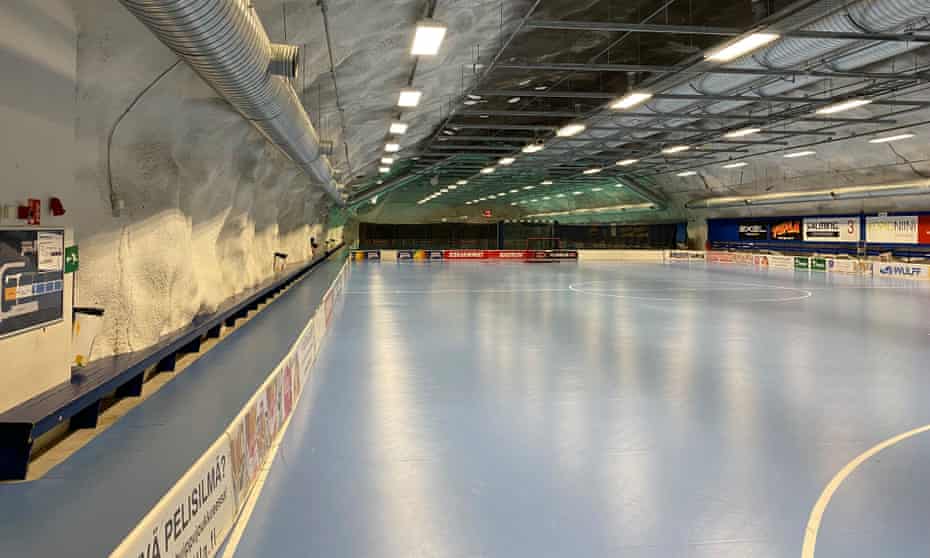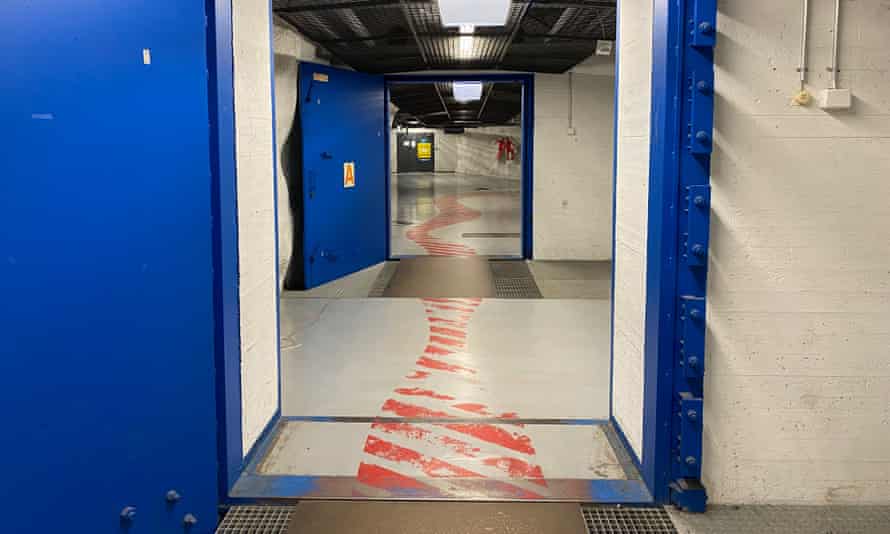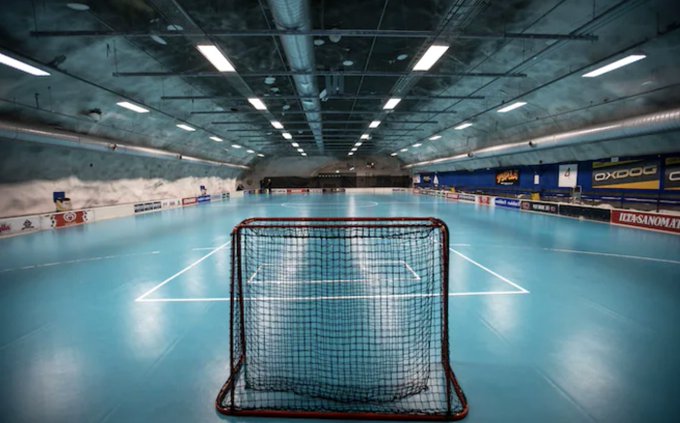Neighbourly Relations: Finland in Russia's Belligerent Shadow
 |
| A sports centre in Helsinki can quickly be turned into a bomb shelter to accommodate more than 6,000 people. Photograph: Pjotr Sauer/The Guardian |
"I sleep much better at night knowing we have these bomb shelters. Especially now with what is happening in Ukraine.""These shelters can protect against practically any bombing or chemical attacks. We have water, clean air and beds that can people going for weeks.""It was built like this on purpose, [maze-like, with different rooms, including a cafeteria and a children’s playroom]. Studies have shown that people react better to rooms that have walls, where there are boundaries that create a sense of privacy.""It’s sad to see what is happening in Ukraine. I see the poor people hiding in the metro or in theatres. It shows again how important it is what we do."Tomi Rask, safety instructor, Civil Defence Centre, Helsinki, Finland"Russia is never specifically mentioned, but it has always been understood that the country should be prepared to make the threshold for a Russian attack as high as possible.""We had no idea at the beginning of the pandemic how bad it was going to get, what it will do to our economy. But then our prime minister came out and said that the deal [to replace its ageing combat jets with 64 F-35 planes and weapons systems in a deal worth £6.97bn.] will go ahead signalling that the country’s security is paramount."Charly Salonius-Pasternak, security expert, Finnish Institute of International Affairs
 |
| A bomb shelter in Helsinki. Photograph: Pjotr Sauer/The Guardian |
There
are countless countries in the world that share long borders, some
undefended, as hugely unlikely that one would ever launch any kind of
violent aggression against the other, and some moderately defended
against the other. For Finland, with its total 5.5 million population,
the undercurrent of concern is always there that its neighbour with its
population of 144 million, its huge, well-armed military that has just
invaded another neighbour, all the signs are there of a potential repeat
of the November 1939 Soviet invasion across its border.
On
that occasion, as with this current situation with the Russian invasion
of Ukraine, the expectation was that the much smaller population and
its military would quickly fold. In both instances, Moscow erred,
hugely. The Finns made a good accounting of themselves back in 1939;
well-trained soldiers, familiar with their own terrain and the
additional climatic hardiness, repelled the invasion but still suffered a
forced negotiation with a wartime penalty of over 300,000 casualties.
As
long ago as that occasion was, the lesson has never faded from memory,
with the expectation that what occurred then could recur at any time.
Leading Finland to prepare itself for such needed contingencies by
implementing a full policy of "total defence", where every bridge,
tunnel and overpass in the country was built complete with charge pits.
In them explosives could be placed as required to slow an invader. And
in addition, the innovation of turning small roads into runways.
 |
Its
bunker system is only one part of a wide-ranging policy of “total
defence”, in which the whole country could be mobilised in the event of
an attack. Photo via Telegraph |
It
is the defence of the entire population that exemplifies the full
measures that Finland undertook, however. The situation somewhat akin to
the tiny Jewish state of Israel committing to installing bomb bunkers
for its population in an overall defence that is of more immediate need,
when conflict could break out at any time between Israel and the
Palestinians; a pincer movement from Hamas in Gaza, Hezbollah in Lebanon
and Shiite militias streaming over the border from Syria.
Some
of those huge underground bunkers built by Finland have been given a
double purpose, serving as entertainment venues for the population in a
practical use of bunker architecture and facilities not in immediate use
as bomb bunkers. Near the centre of Helskini is a play area called the
Hakaniemi Arena, with colourful slides, trampolines and tunnels, lying
25 metres below ground, hollowed out of bedrock under the city.
The
cavernous space designed to withstand nuclear, biological and chemical
attacks. Families with children visit the play area and make full use of
its recreational facilities, regarding it as a civic infrastructure
offering quality play time for children as a sport centre. A small
orange and blue triangle above ground level identifies the complex as a
defence shelter. A shelter that has the capacity to house up to 6,000
people.
Until
it is put into use for its original purpose, rooms off to the side are
closed to the public. There is where beds are stored, where air
filtration systems await, along with temporary toilet facilities and
similar living essentials. There are two layers of blast doors between
the indoor space and the outside world; each 35 cm in thickness. One
designed to stop a blast, the other to seal the atmosphere.
In
the capital city alone, 5,500 bunkers exist, offering a protective
place for 900,000 people. In the entire country shelter spaces offer
room for 4.4 million in over 54,000 locations.Any building by law over
1,200 square metres must have provision for a shelter. The government
itself has built and maintains over 44 large public shelters in
Helsinki. There are storage rooms, sports halls, swimming pools in the
shelters' civilian functions which must be amenable to being stripped
within 72 hours.
Civil
defence instructor Tomi Rask explains that the public would be informed
through television, radio, a website and a special app along with
outdoor sirens, should an urgent need for the bunkers arise. Preparation
for the possibility of chemical accidents and natural disasters are a
risk, but while never explicitly stated in official statements, invasion
by Russia with which a 1,340 km. border is shared, is the major
concern.
 |
| Helsinki's network of tunnels can fit the city's entire population. CNN/Karim Peltone |
Labels: Aggression, Arms, Bomb Shelters, Concern, Finland, Russia
Labels: Aggression, Arms, Bomb Shelters, Concern, Finland, Russia

<< Home